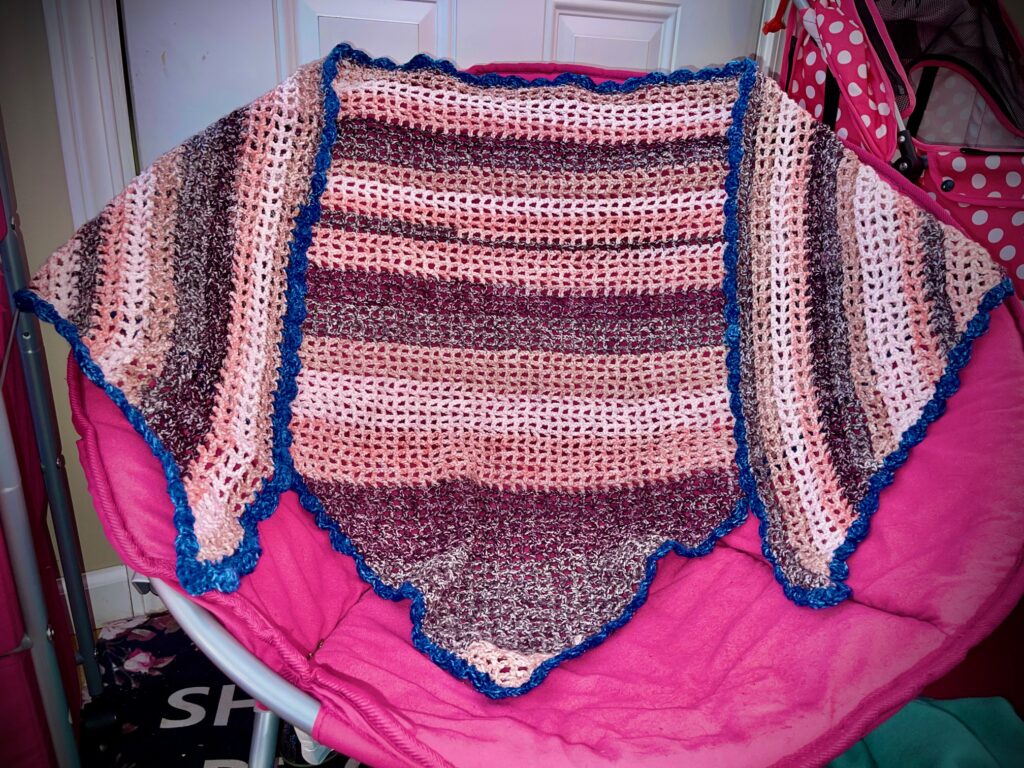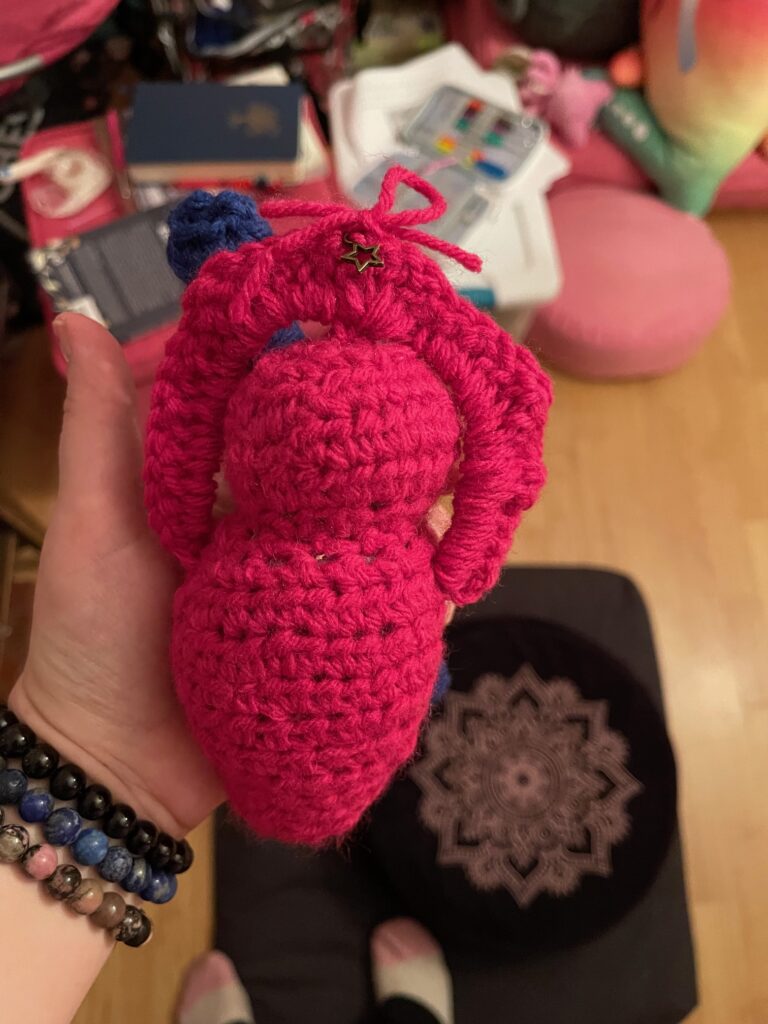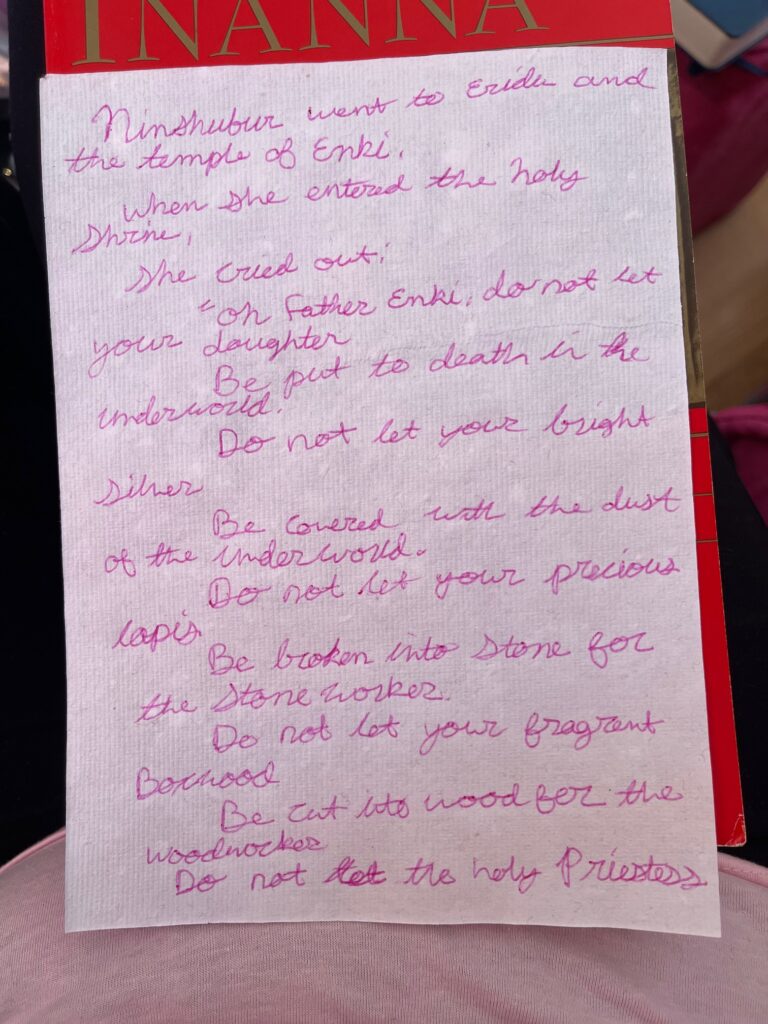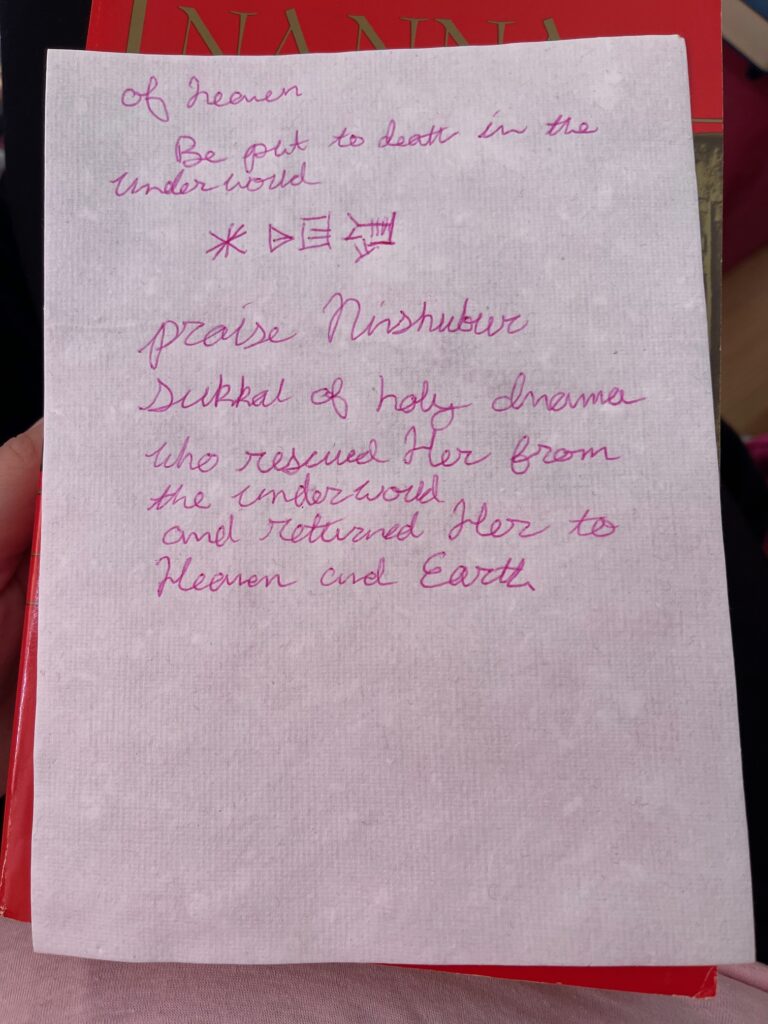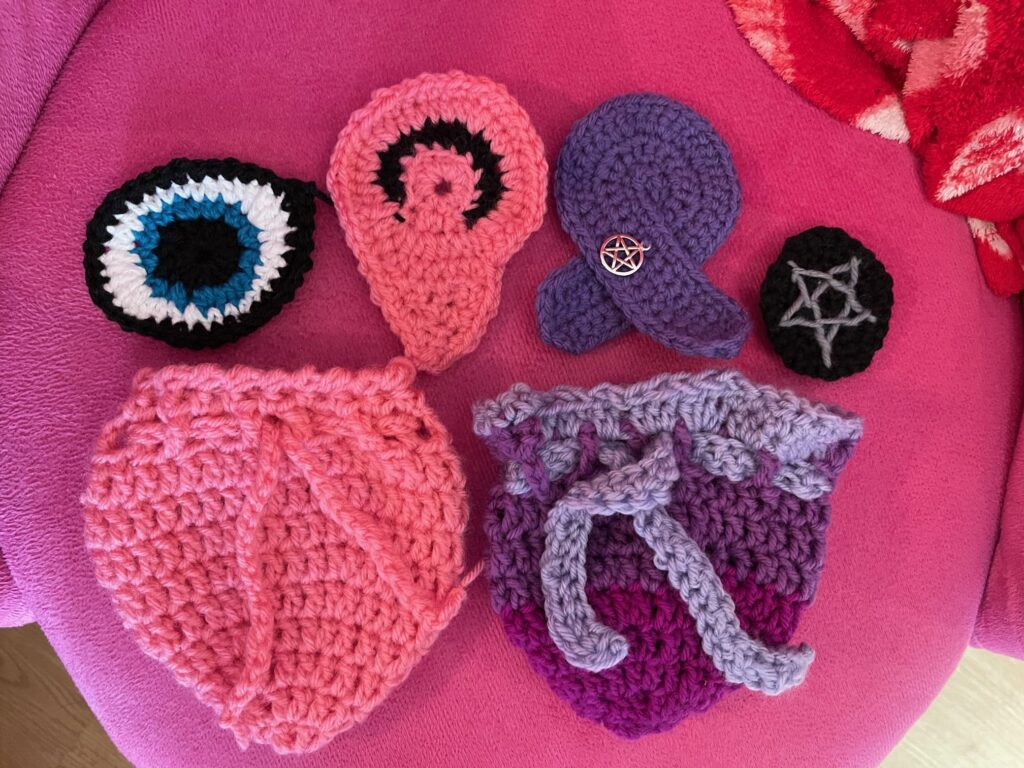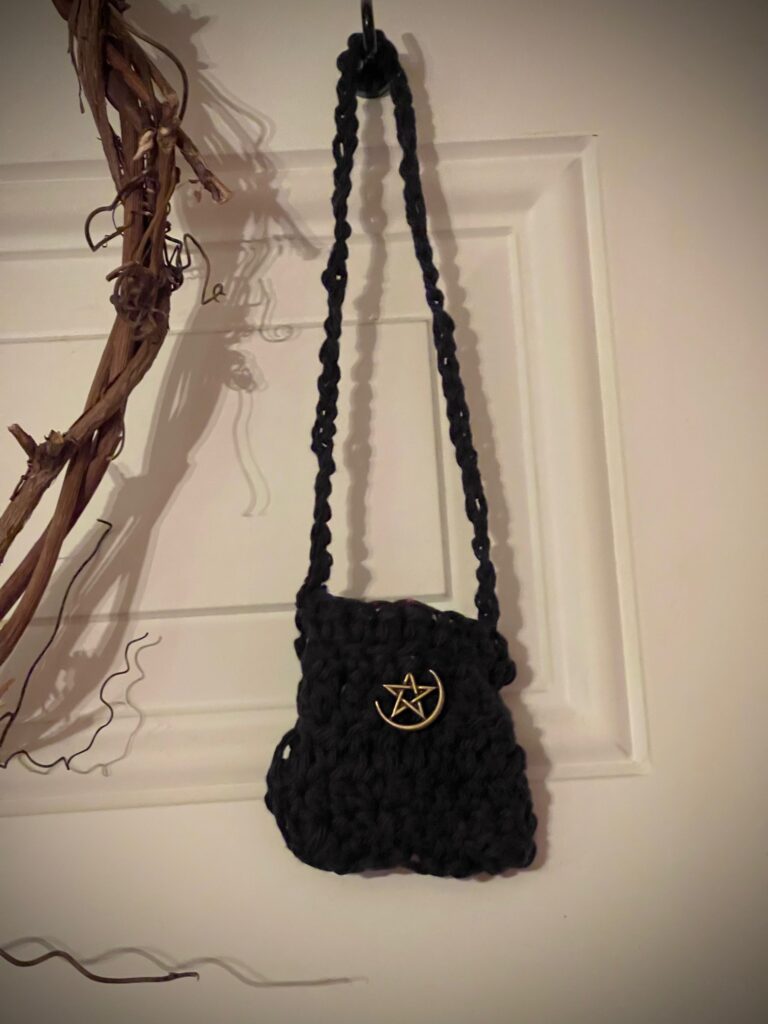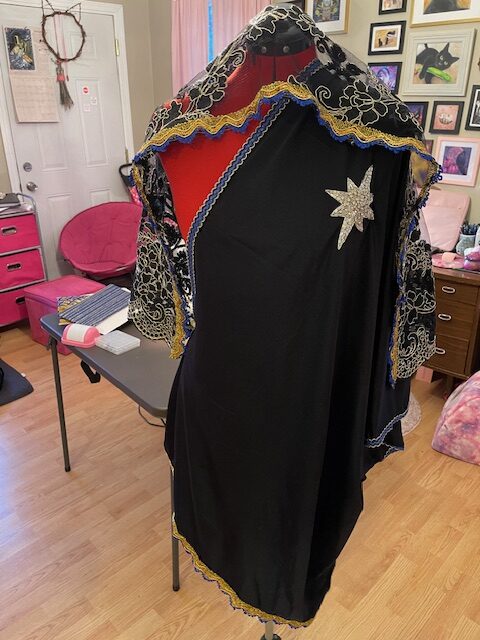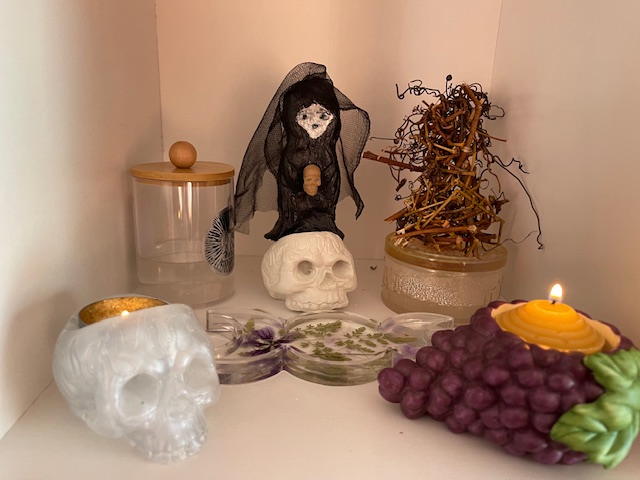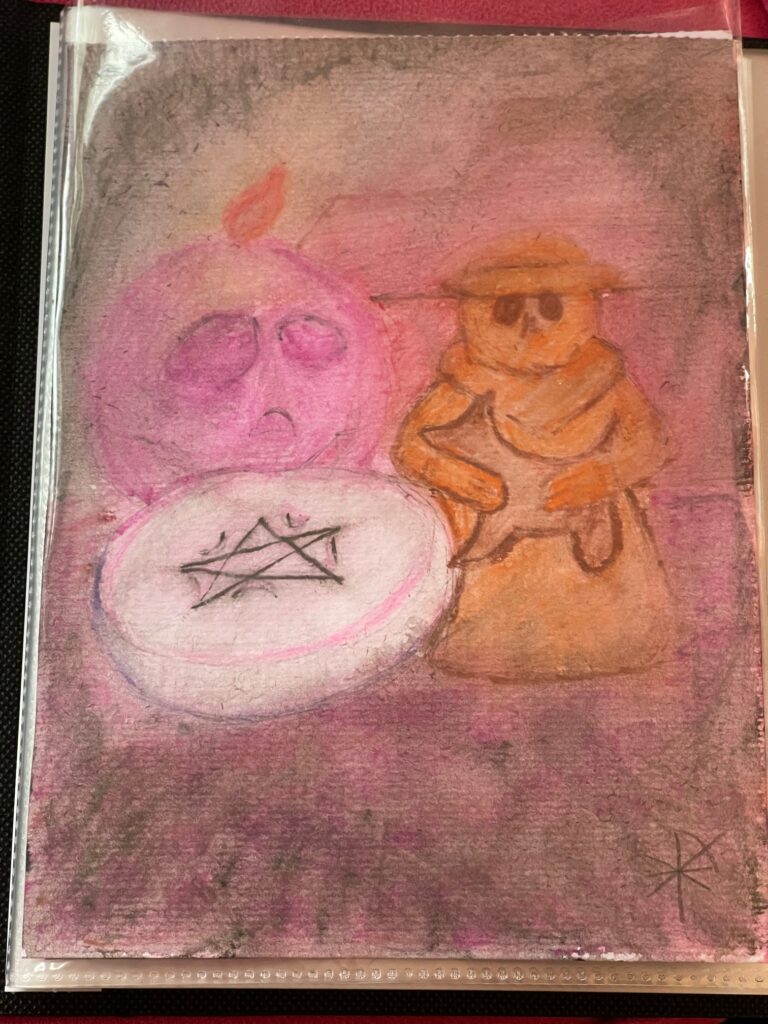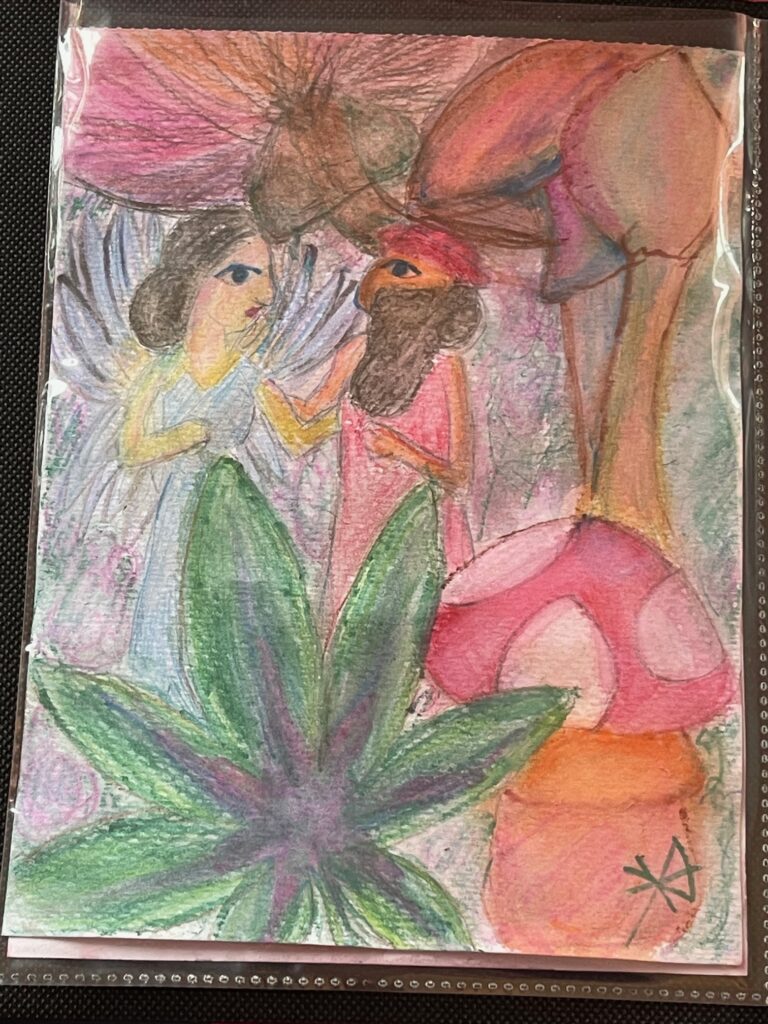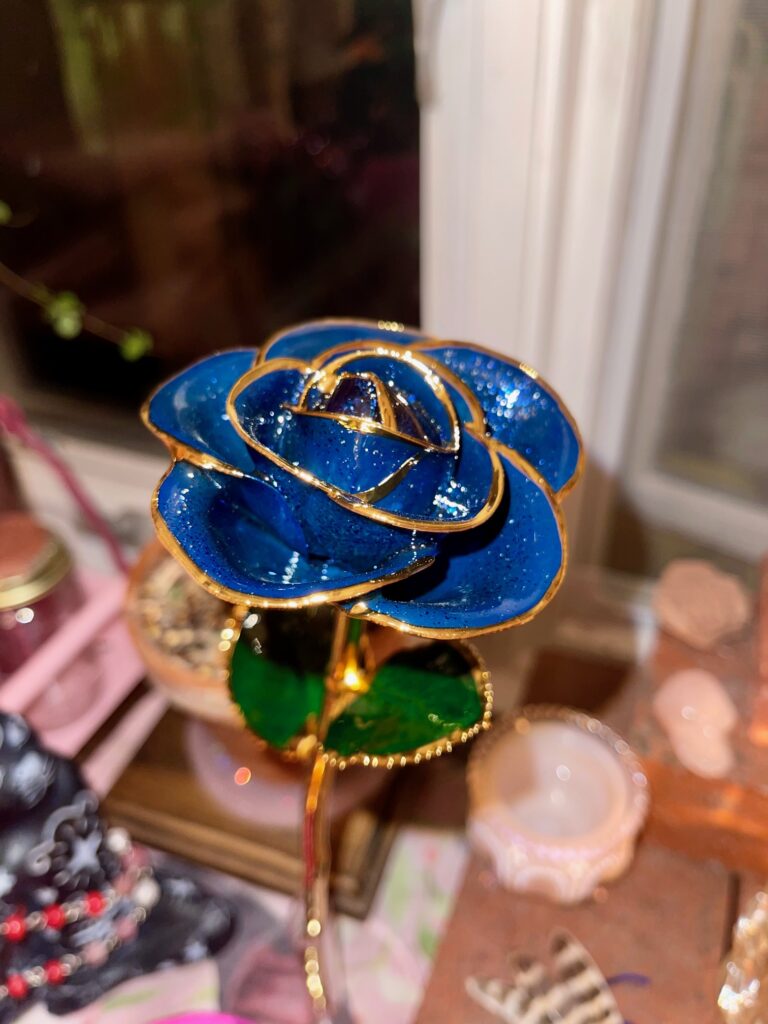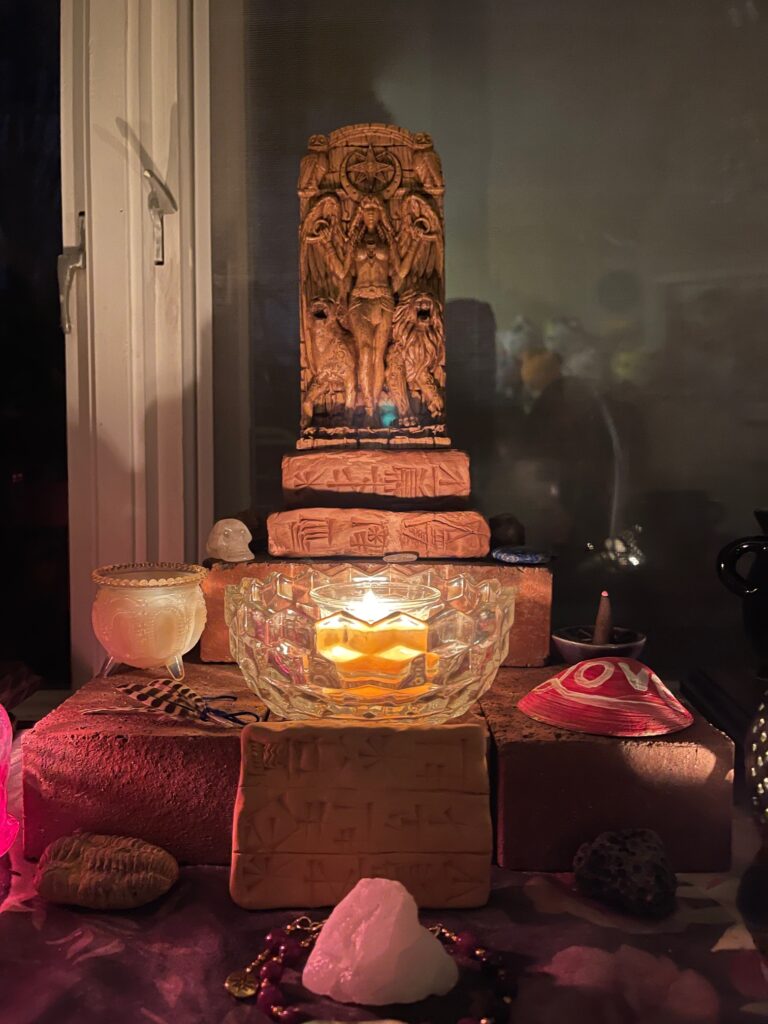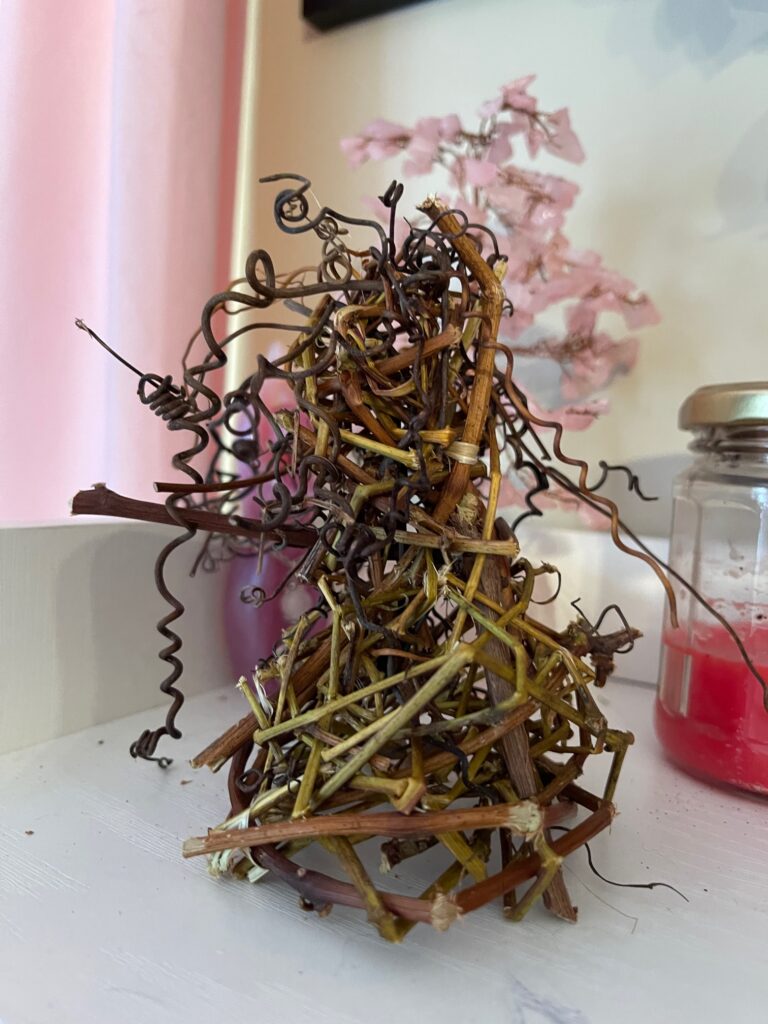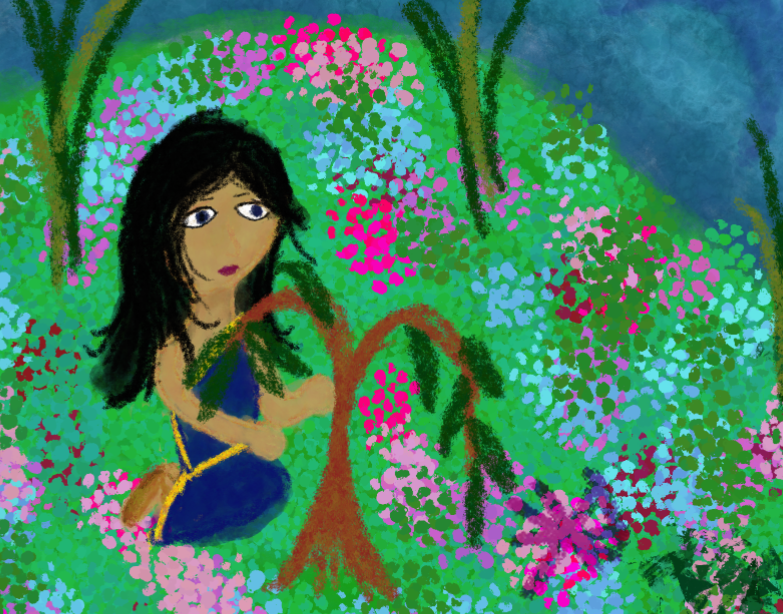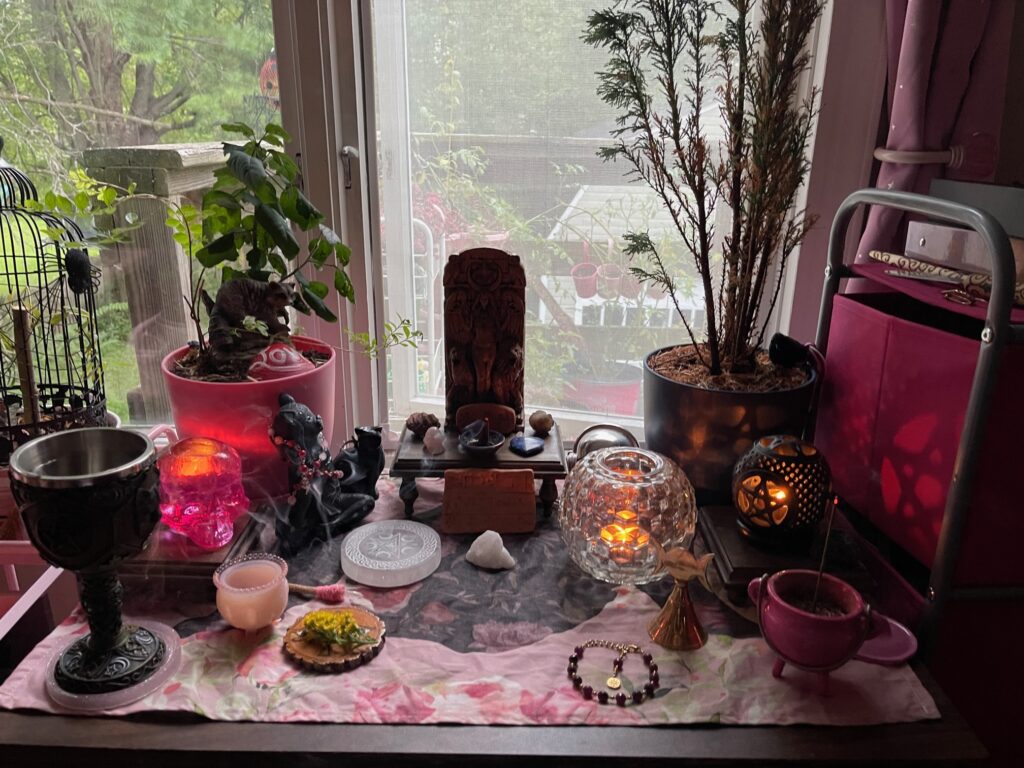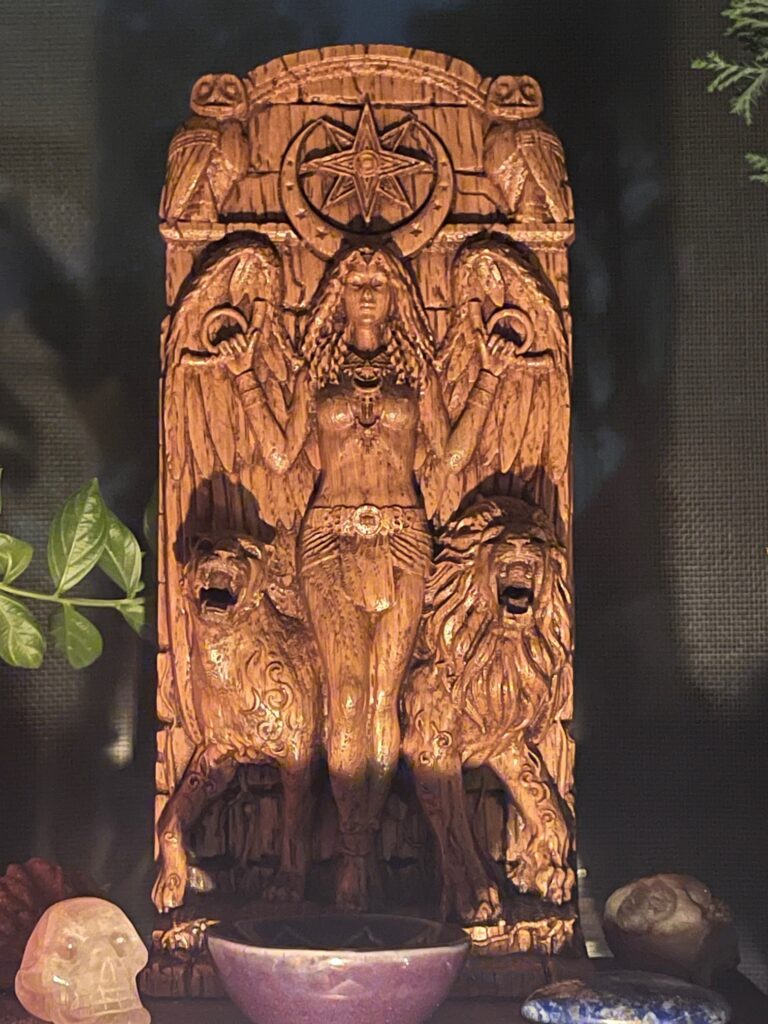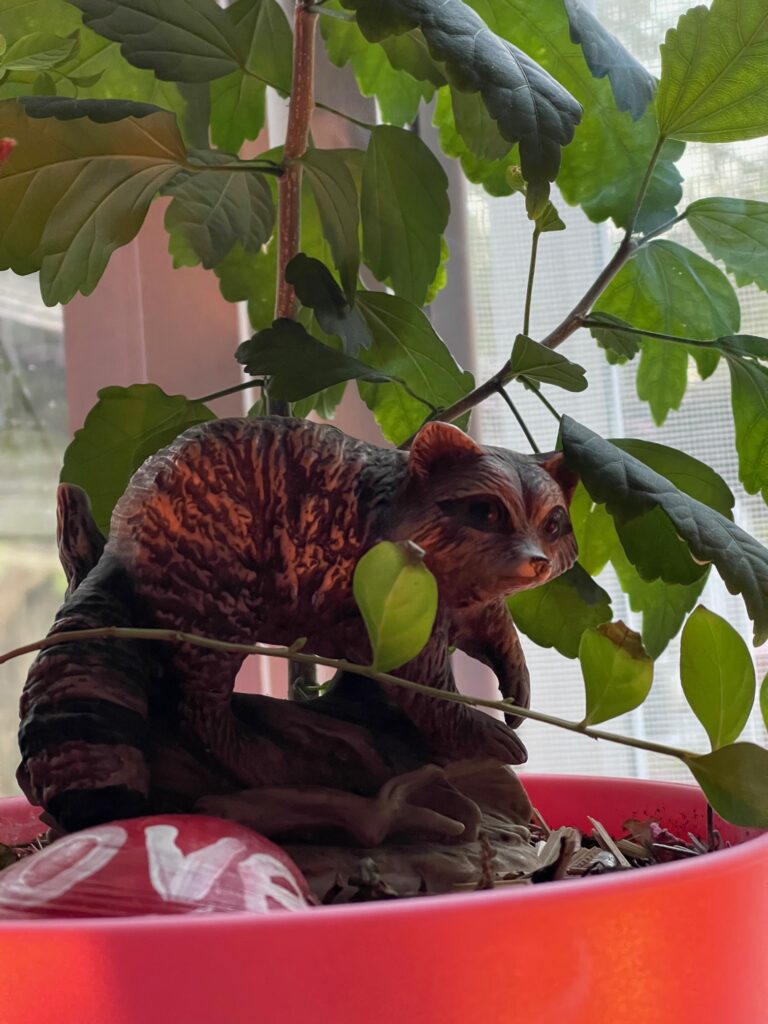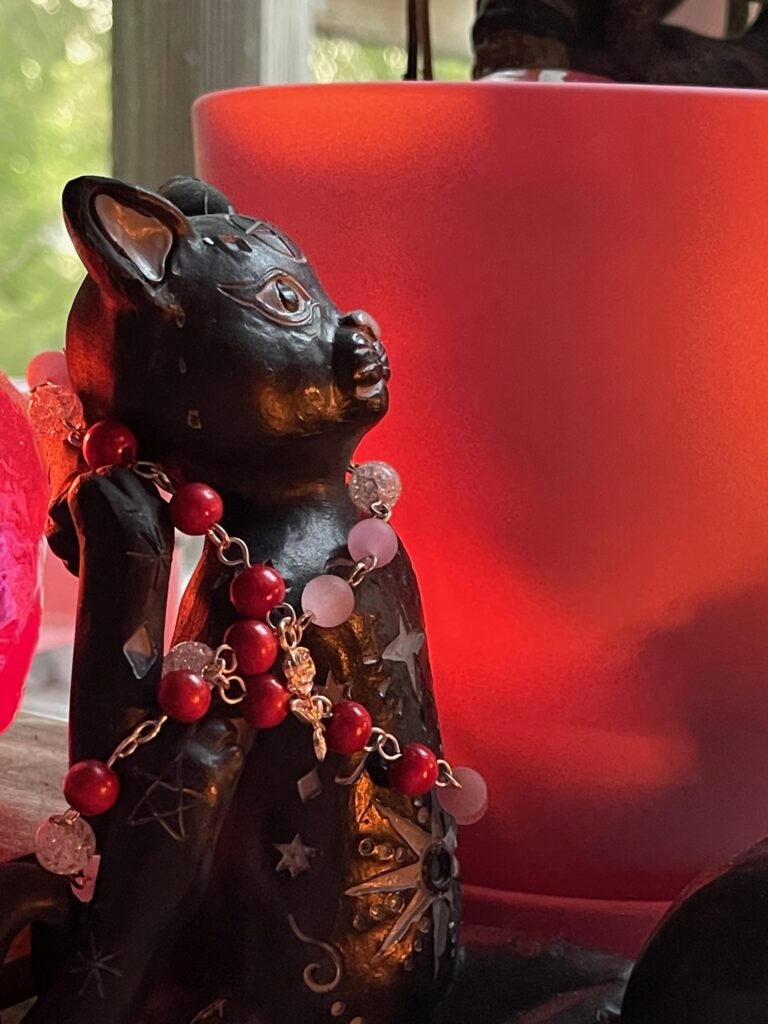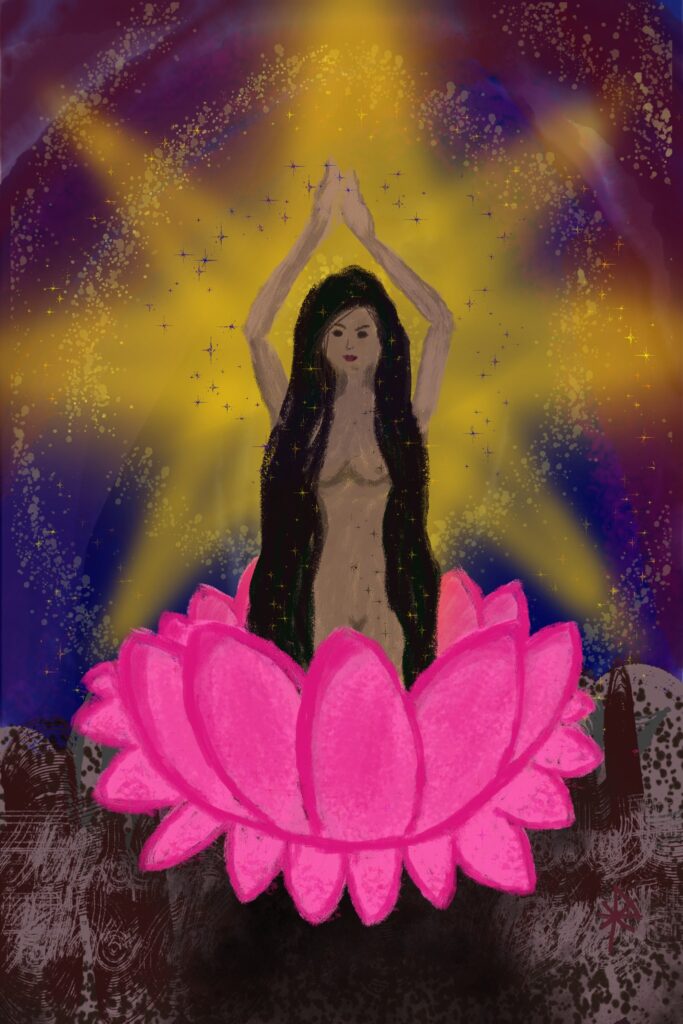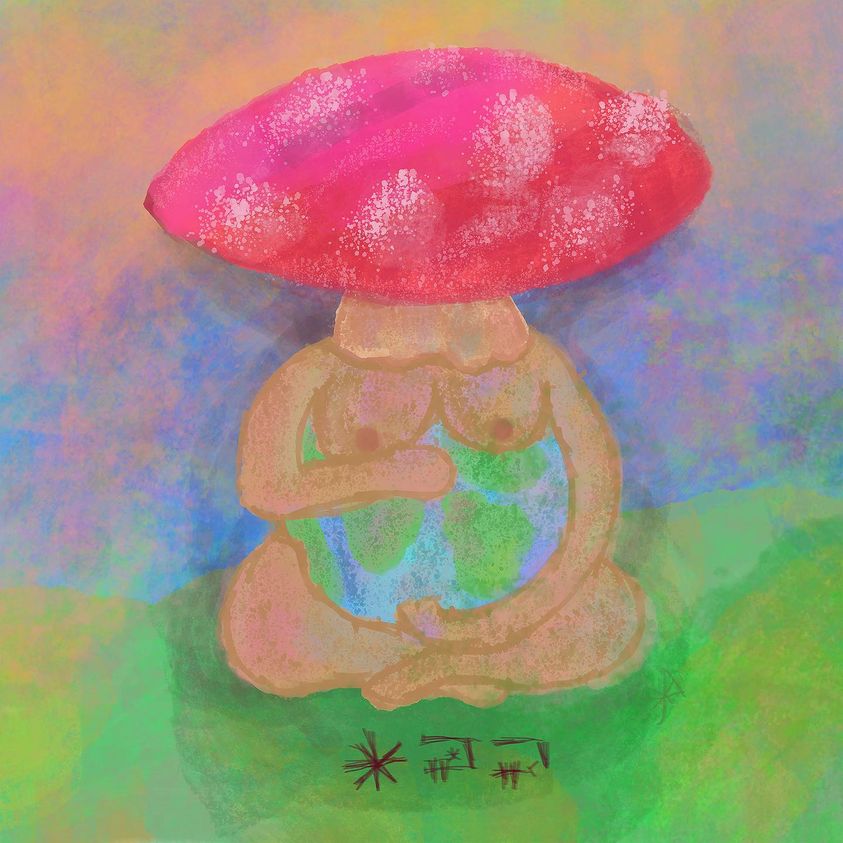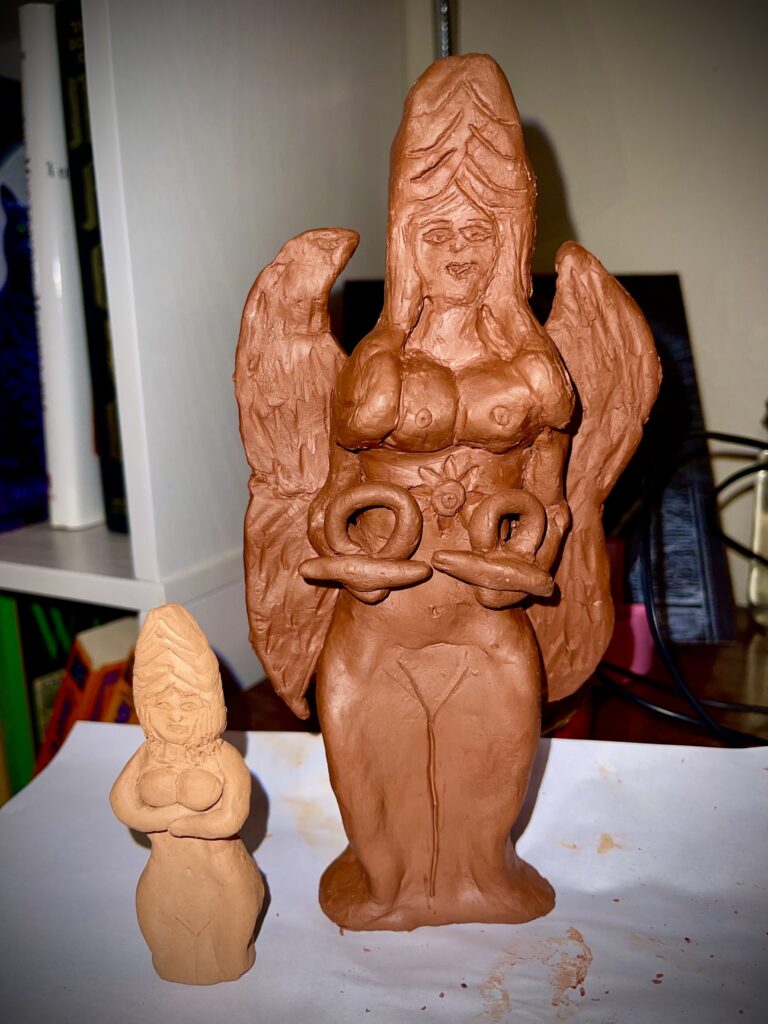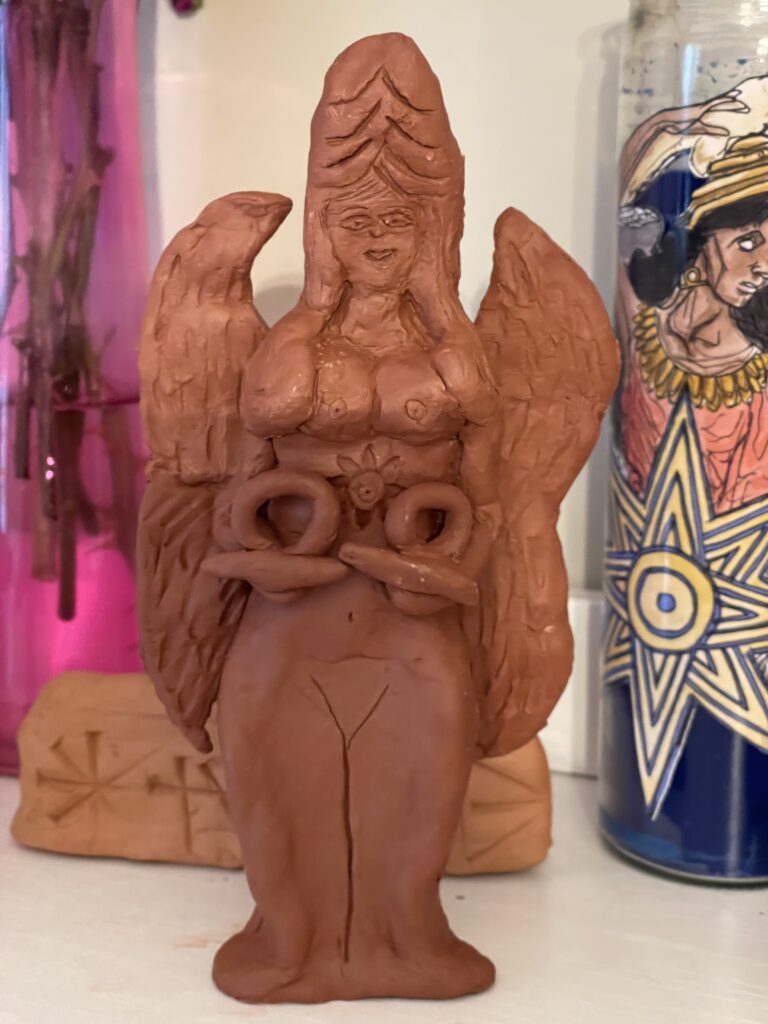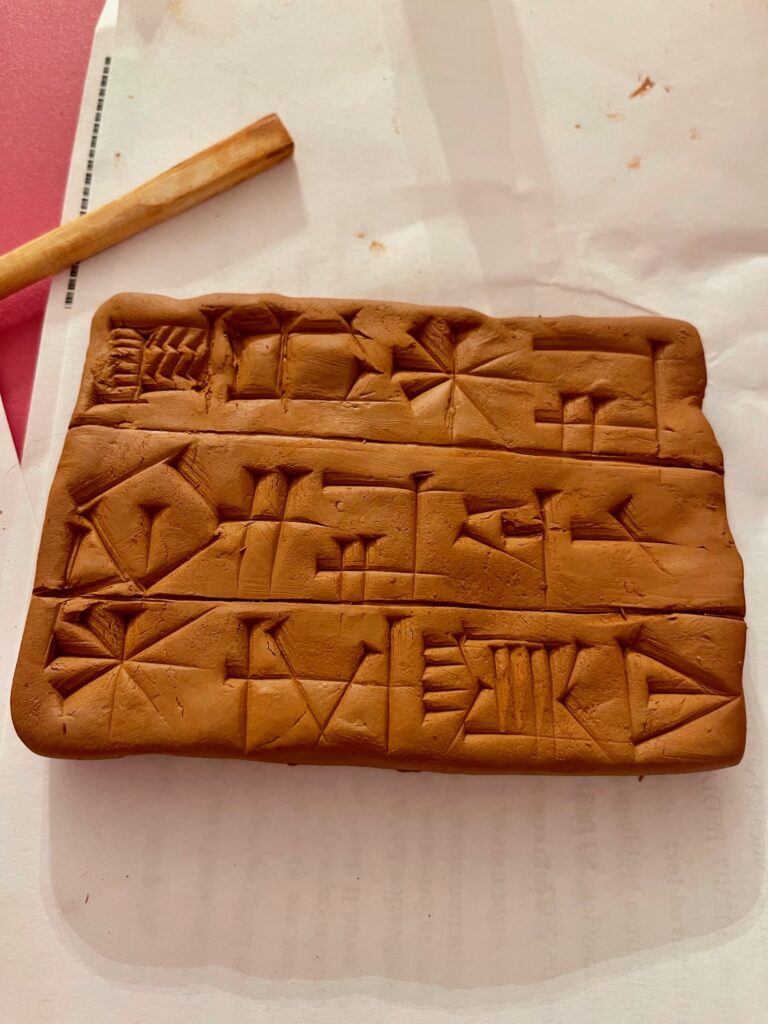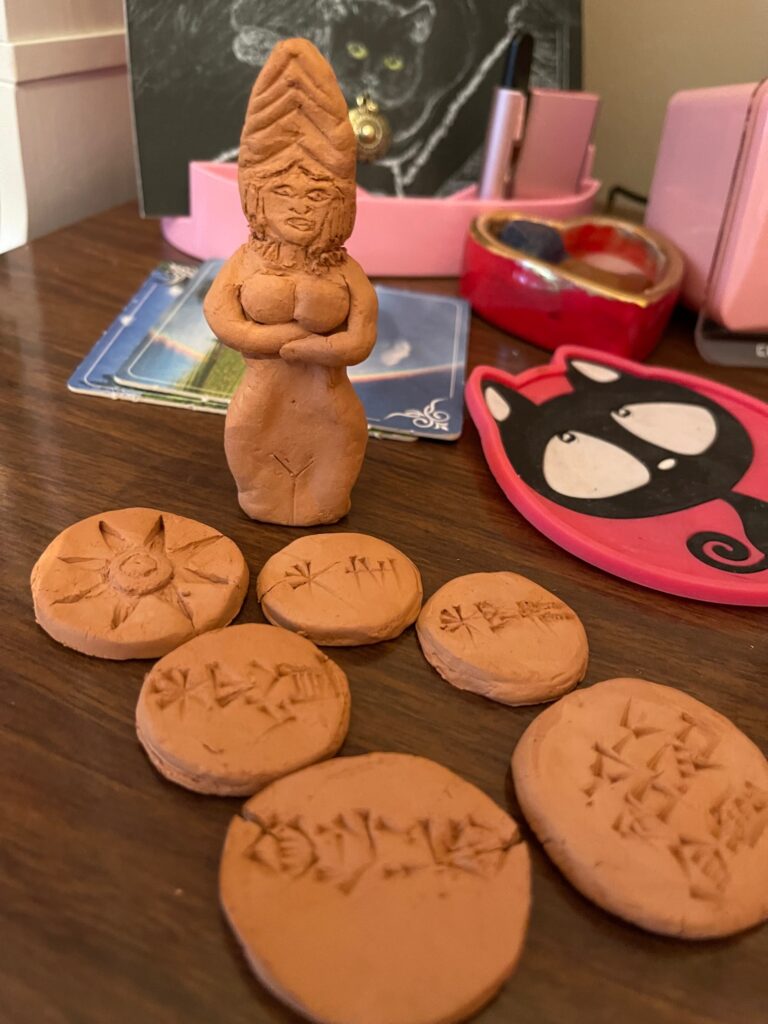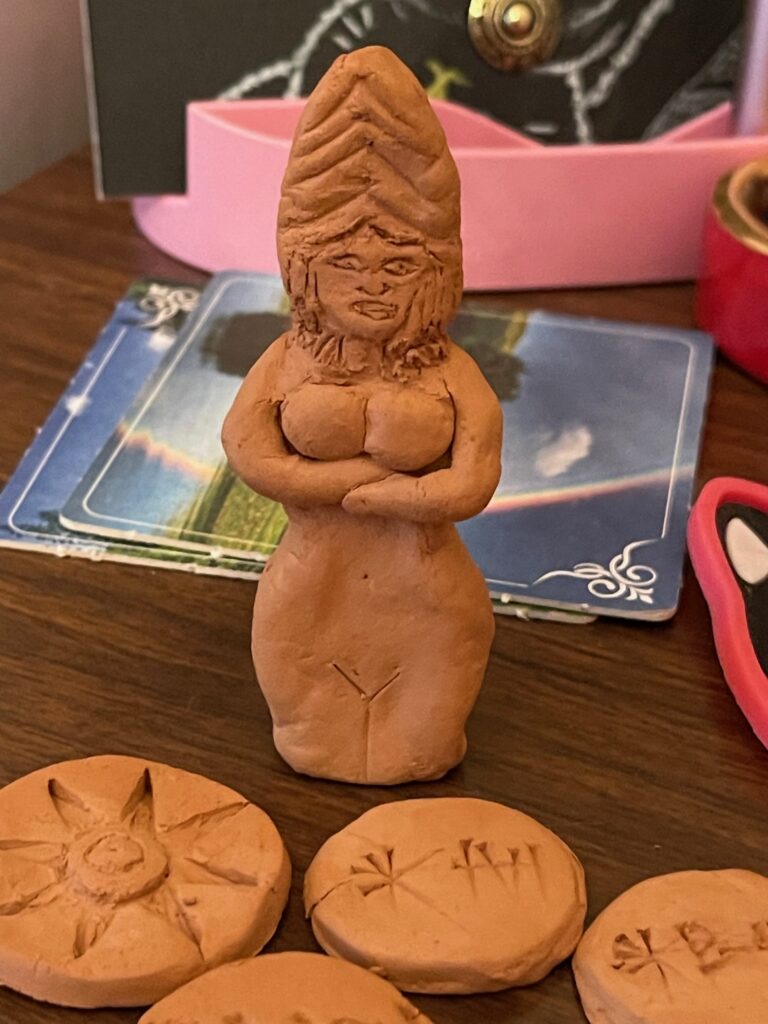This month I did the second part of the descent rituals for Rod and Ring. Technically I did it a day earlier than I was supposed to because I wanted to see what would happen if I did it on the night of the solar eclipse. And I think I made the right choice for me. I think adding that energy into my ritual gave it a bit of extra power. To me, the moon eclipsing the sun kind of represents the hidden mysteries coming to the forefront over what is normally revealed in every day life. So it seemed like a good time to do work relating to the underworld.
At the first gate, I had to relinquish my light/fire. The book didn’t give any actual physical actions to symbolize this, but in the moment I felt like I was supposed to extinguish the candle on my altar that I use to represent myself (or sometimes mortality in general – it’s in a pink skull candle holder), so I did that. I set up my altar the same way I do for my daily devotional and magickal workings, and just add whatever else I need for the Rod and Ring work, so I already had it burning.
Then, for each of the rest of the gates, I felt like I had to give up something physical as well, so I removed the pieces of jewelry that I thought best corresponded with each gate. Except for gate six, in which I had to give up my “song,” so I turned off the background music I was using and did the rest of the ritual with no sounds except the ritual words. I don’t read the actual ritual text ahead of time because I like it to be as immersive as possible, but if I had, I think I would have prepared the items to “give up” a little bit better. Though I guess it might have been better this way, not knowing ahead of time that I would be physically removing things (though I’ve read the descent myth a billion times, so it really shouldn’t have been a surprise).
I stopped to meditate on each gate for quite a while before proceeding to the next. After the ritual, I stayed at my altar in meditation for a while and I think I did pass out for a bit, and then I got really sick and threw up. I’m only documenting that so if anyone is thinking about starting this journey, you’ll be aware of how it can affect you physically. It’s probably not a journey for everyone to undertake, but I’m glad I’m doing it.
The book said to do each of the underworld sections three months apart, but I was talking to Prisca, the priestess who runs Circle of Inanna, and she said that Samuel David said it was ok to do the three rituals over three months total. The last couple days, I’ve been thinking over if I want to keep my House of Dust ritual three months after the 7 Gates, or just do it on the next new moon. I think I’m going to keep it for July as I had originally planned. I have two reasons for this:
First, I’m going to be exploring some caves just before I have this ritual planned, and I think keeping the sensory memory from that experience fresh in my mind will add an extra dimension to the ritual. Kind of like how I used my time at Kalahari in the first part of Descent back in January when I crossed the river.
Second, keeping it scheduled how I have it planned mirrors my cancer treatment journey from a couple years ago, which began in January and ended in July. And I think an intentional journey through the underworld that mirrors the same time frame is going a long way in helping me to integrate and come to terms with that very much unwanted “underworld” experience.
I know some Mesopotamian polytheists have a problem with interpreting the myths in a psychological way like that, but myths are first and foremost stories – the oldest stories – and stories are meant to be interpreted in many different ways. There’s no one “correct” interpretation or one “correct” way to work with any particular myth. In some of my classes for my English/Creative Writing degree, we were expected to read and analyze stories from many different perspectives. Of course 5000 year old myths can be approached from many, many, many different perspectives! Maybe some of the more mainstream modern religions like Christianity take a mythic literalist approach where they believe each of their biblical myths literally happened and can mean only one thing, but I feel like that is nonsensical and would miss the point of paganism entirely. That’s just not how literature works! And in my opinion, myths in particular are humans’ interpretations of divine energies and how they interact with each other, not something that literally happened, though a lot of them might be loosely based on actual historical events and people.
Oh, and the solar eclipse itself was amazing! I watched it from the front patio at work, and I wish I would have planned better and taken the day off to watch it from home, but it was still an amazing and awe-inspiring experience. I think my favorite part was getting to see Venus in the middle of the day! Of course I had to stop to pray to Inanna (silently in my head – I don’t need to subject coworkers and children to my religious practices. Take note, conservatives!)
And I could see Jupiter too! I think Jupiter is my second favorite planet after Venus. I have a weird relationship with Marduk that I’m still figuring out. Like, I’m not super drawn to Him, but he keeps kinda showing up in my practice when I’m really trying to focus on deities that were worshiped more in earlier historical periods. But I did name my LLC after Him/Jupiter in a way, so maybe I should start paying more attention to Him? idk. Right now, since I’m doing the underworld part of this initiation, in addition to Inanna, I’m more focused on Ereshkigal.
